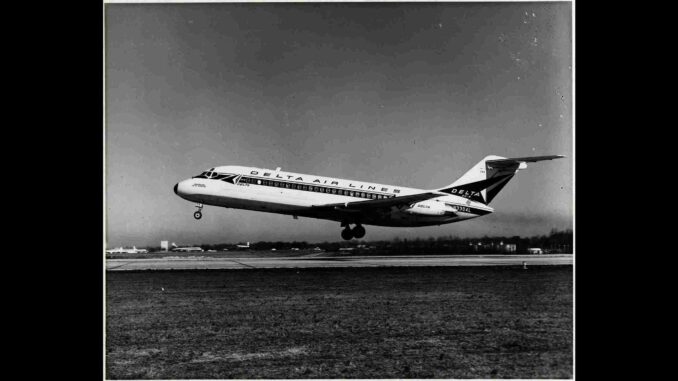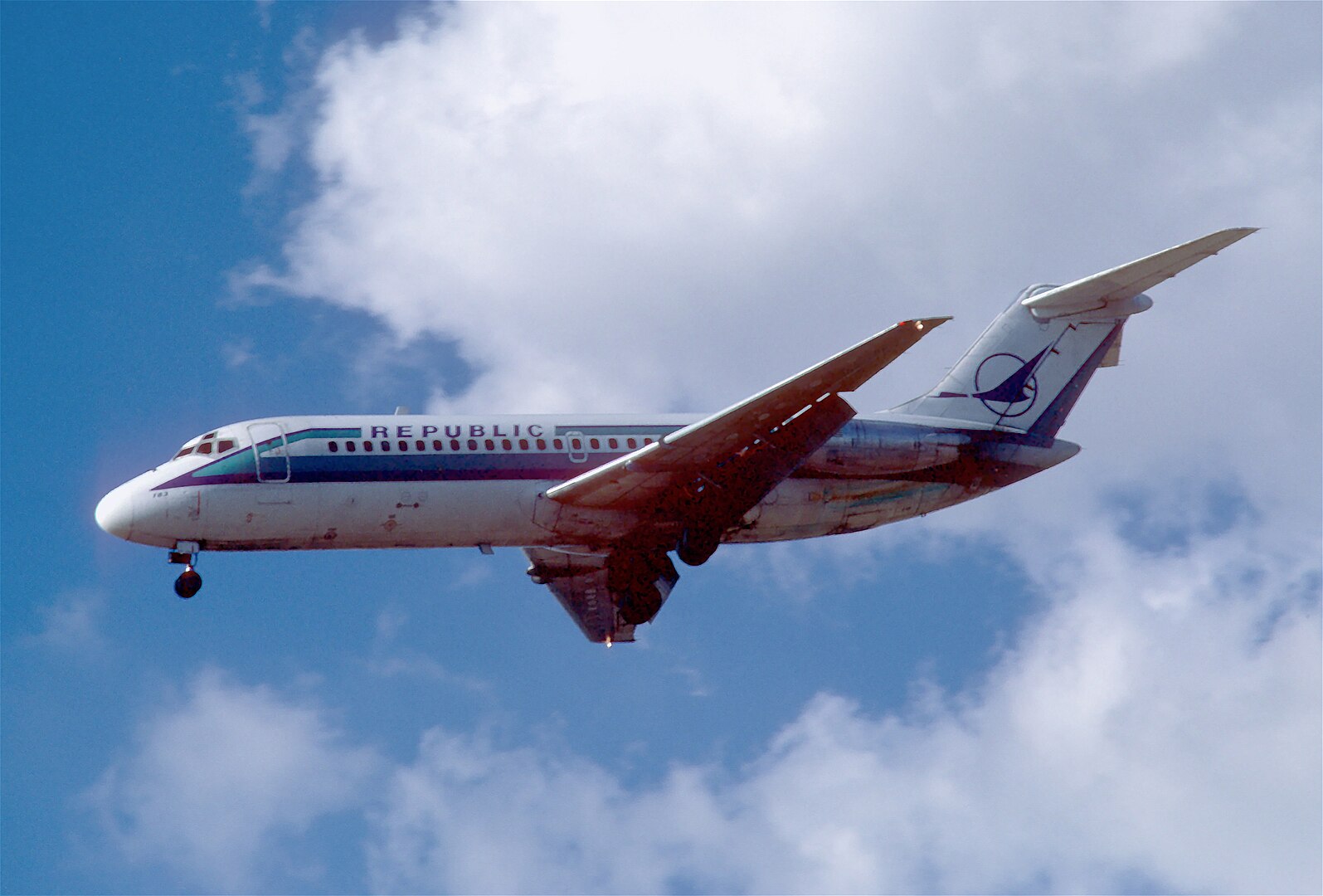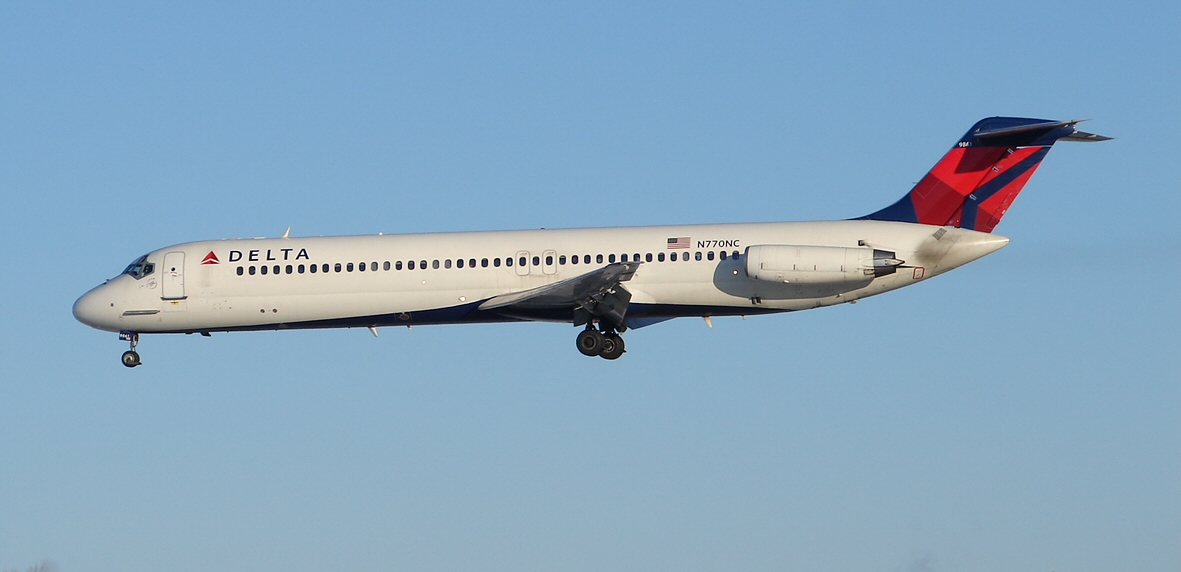
Today in Aviation History is a series highlighting the achievements, innovations, and milestones that have shaped the skies. All the previous anniversaries are available HERE.
The Douglas Aircraft Company was exploring various designs for a short-range airliner to complement their long-range airliners during the late 1950s. The initial idea was that of a four-engine aircraft, which was scrapped due to a lack of interest from the airlines. However, this idea evolved over time, and by 1963, the DC-9 was officially introduced.
Initial Idea and the First Flight
The idea underwent many obstacles before its final implementation in 1963. In 1960, Douglas collaborated with a French aeronautic firm, Sud Aviation, into a two-year contract, given a licensed production would resume if enough airline orders were received. Unfortunately, this never happened, and Douglas returned to their own designs. After that, on April 8, 1963, Douglas announced to proceed with the detailed design of the DC-9, and no later, Delta Airlines placed the initial order of DC-9, ordering about 15 aircraft. The series 20 was explicitly designed in response to Scandinavian Airlines who requested for an aircraft that could operate in harsh, cold climates and shorter runways. The DC-9-20 combined the lightweight fuselage of the DC-9-10 and the wings and engines from the larger DC-9-30. Thus, designed to handle shorter runways and higher performance needs. With plenty of orders in hand and successful manufacturing, the DC-9-20 finally took its first flight on September 18, 1968. The DC-9 quickly became popular because of its economical operation and efficient design.

Stand-out Features
The McDonnell Douglas DC-9-20 design had several unique features which propelled its popularity. Being a short to medium-range aircraft with a compact design allowed it to operate over shorter runways. With a modified wing having a span of 28.44 m, it was designed to improve lift and efficiency during take-off and landings, and the aircraft was powered by two 15,000-lb thrust JT8D engines, giving it improved performance. Having a rugged build, the aircraft also became famous for its sturdiness in rough field operations and cargo, adding to its long-lasting services.
| Length | 31.82 meters |
| Wingspan | 28.44 meters |
| Height | 8.38 meters |
| Maximum Take Off Weight (MTOW) | 46,040 kgs |
| Engines | Pratt & Whitney JT8D-11 |
| Maximum Cruise Speed | Mach 0.82 |
| Range | 2,350 km |
| Passenger Capacity | 90-115 passengers |
The Merge: Boeing & McDonnell Douglas
The DC-9-20 series initially outperformed competitors like Boeing due to the DC-9’s efficiency for shorter flights. Featuring a shorter fuselage and enhanced lift performance, the aircraft held a strong position in the market, delivering double the number of aircrafts than its nearest rival. However, over time, Boeing came up with newer versions and improved designs, overtaking the DC-9 in popularity and sales. On August 1, 1997, McDonnell Douglas and Boeing officially merged to strengthen their position in the aviation industry. The decision to merge came after both companies experienced financial pressure, both McDonnell Douglas from declining military contracts and Boeing from its aggressive expansion into the commercial sector.
Present Day Roster
The commercial use of the DC-9-20 series has dramatically diminished over the years, but a few are still operational for private, skydiving or cargo purposes. Some present-day operational DC-9 series operators are airlines like Aeronaves TSM in Mexico and USA Jet Airlines in the US use the DC-9 series for cargo transport, The US Navy operates three for passenger and medical transport, and African Express Airways in Kenya remains the only operator using a DC-9 for scheduled passenger flights.

A long-lasting Service
The first flight of McDonnell Douglas DC-9-20 in 1968 became a crucial moment in aviation history, offering improved performance to short and medium-range air routes. DC became an extremely compliant and versatile option for airlines looking to expand their operational flexibility over high-altitude airports with shorter runways. This development contributed to the multi-faceted success of the DC-9 series, making it a significant step in commercial aviation during the 1960s.
"Haritima Maurya, pen name, ""Another Stardust,"" has been passionate about writing since her school days and later began sharing her work online in 2019. She was drawn to writing because of her love for reading, being starstruck by the art of expression and how someone can make you see and feel things exclusive to their experience. She wanted to be able to do that herself and share her mind with world cause she believes while we co exist in this beautiful world least we can do is share our little worlds within.
As a commercial pilot, Haritima balances her passion for aviation with her love for storytelling. She believes that, much like flying, writing offers a perspective beyond the ordinary, offering a bridge between individual experiences and collective understanding.
Through her work, ""Another Stardust"" aims to capture the nuances of life, giving voice to moments that resonate universally. "



Be the first to comment
Graphic Design, Branding and Aviation Art